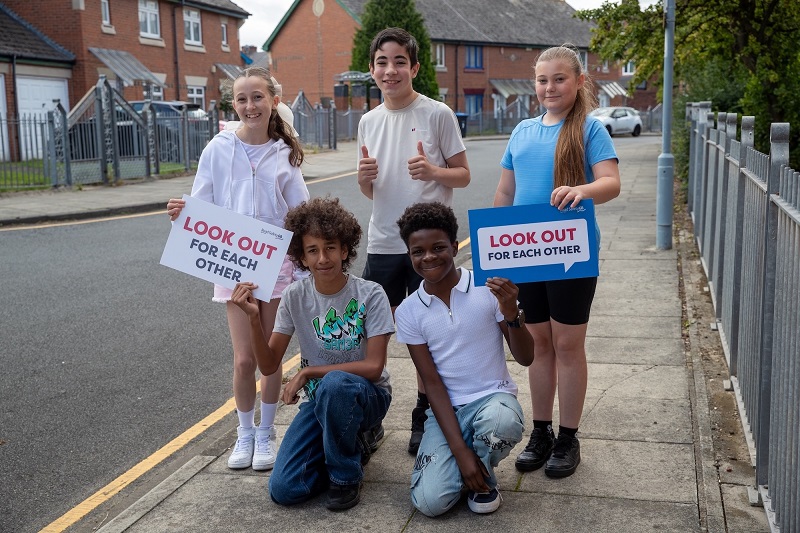
Drivers in the North East are being urged to watch out for children after the latest figures showed that boys aged between 11-13 years are one of the highest risk pedestrian groups in the region.
The figures show that during the last five years, 763 children aged between 11-13 years were injured in road collisions, with three of them tragically killed, and 169 suffering serious injuries.
Of these, half were pedestrians and 26% were cyclists, with boys accounting for two-thirds of the total casualties and all of the fatalities.
In a bid to raise awareness and keep children safe on the roads, a group of young drama students have joined local authority partnership Road Safety GB North East (RSGB NE) in highlighting the risks and urging drivers to slow down and watch for young people stepping out.
In a series of social media videos, the drama students are appealing to their peer group to keep their eyes on the road and to look for dangers before stepping out, especially on the way to and from school, when a high number of collisions involving children occurs.
Daniel, aged 12, a student at the Pauline Quirke Academy in Middlesbrough, said: “I wanted to be part of the campaign because I want to spread awareness of road safety to help people my age be safe on the roads when walking to school.”
And Olivia, aged 11, who is also a student at the drama school, urged drivers to slow down and to drive below the speed limit, particularly in built-up and residential areas, and to watch for people stepping out.
She said, “I wanted to get involved to help keep children my age safe while crossing the road. They should remember the green cross code and stop, look, listen, and think before stepping out.”
Peter Slater, chair of RSGB NE, which is a road safety campaign group representing the 12 local authorities from across the region, said urgent action was needed to better safeguard children.
“Children at this age are gaining more independence, walking or cycling to school, visiting friends, or heading into town, but they may not yet have the awareness to always make safe decisions in traffic,” said Peter.
“There are too many children being injured or killed on our roads, so young people need to be reminded about the importance of paying attention and looking and listening for traffic, rather than looking down at phones and just stepping out into the road.
“However, drivers must also watch out for pedestrians, especially in built-up areas where children are likely to be. Nobody wants to be a driver that hits a pedestrian, especially where a child is involved, so we are urging motorists to drive with caution.”
Michael Hogg, casualty reduction sergeant at Durham Constabulary, said: “Children are some of our most vulnerable road users. They are starting to gain more independence, but they may not always have the awareness to make the safest decisions.
“That’s why it’s so important that we, as drivers, take extra care. Nobody wants to be behind the wheel of a vehicle involved in a collision with a child.”
This is the danger of over-reliance on data and stats… deriving a ‘road safety message’ from too narrow an analysis of data. Collisions involving children are not unique to the north east, nor are collisions with any pedestrian, anywhere, regardless of age, so to advise drivers in one particular geographic area to pay particular attention to one particular age group – whilst well-intentioned – is too blinkered in my view. Drivers eveywhere should obviously, as a matter of routine, be alert to the actions of all pedestrians and be ready to stop.
Hugh Jones, South Wirral
+2